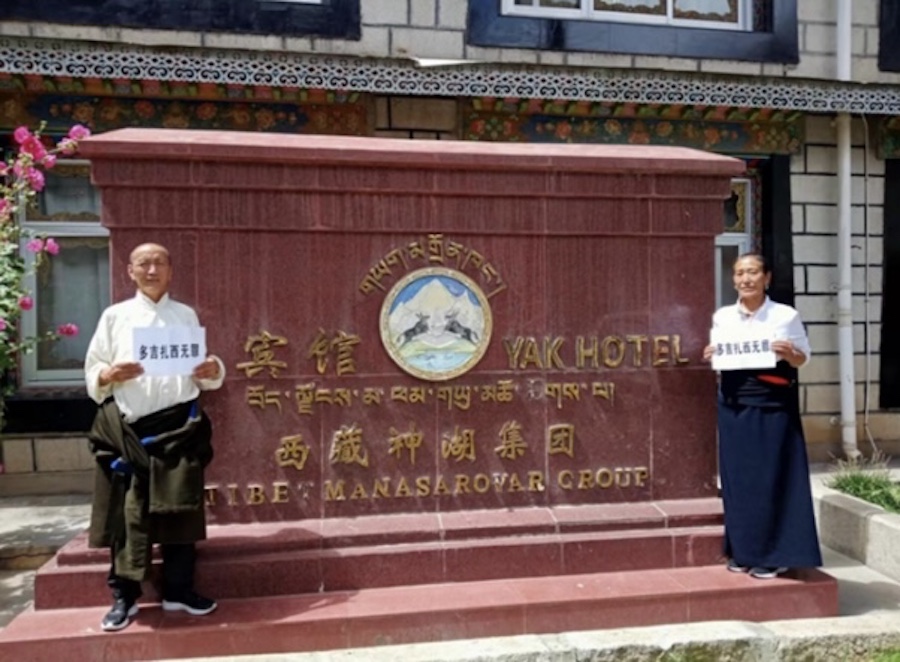 DHARAMSALA, September 6: The opposition in the Indian parliament is looking forward to a clarification from Indian Defence Minister AK Antony over the alleged occupation of about 640 square kilometres of Indian territory by Chinese army.
DHARAMSALA, September 6: The opposition in the Indian parliament is looking forward to a clarification from Indian Defence Minister AK Antony over the alleged occupation of about 640 square kilometres of Indian territory by Chinese army.
According to Indian media reports, the National Security Advisory Board (NSAB) chairperson Shyam Saran was commissioned by the Prime Minister’s Office (PMO), to study the situation on the ground and submit a report. Indian media say that the report submitted by Saran indicate that China had occupied 640 kilometres of Indian territory in April in Daulat Beg Oldie and other sectors in Ladakh.
The NSAB report on the Indo-China border revealed that Chinese troops are not letting their Indian counterparts patrol the Indian side of the Line of Actual Control (LAC), media reports claim. The Prime Minister had instructed Saran to visit eastern Ladakh and Siachen sectors in the first week of August for reviewing infrastructure development and security situation.
The issue was raised in the Lok Sabha on Thursday by BJP leader Yashwant Sinha who said media reports have quoted the Committee as having concluded that 640 square km of Indian territory has been occupied by China.
“The Parliament is unaware of this… The Defence Minister should be called immediately to the House and he should clarify on the issue. There should be a debate in the House,” Sinha said.
Some media reports have alleged that Saran concluded from his visit to Ladakh that Indian troops are cut off from the border and are being prevented by the Chinese army from patrolling near Daulat Beg, where India has built one of the world’s highest landing strips. The National Security Advisory Board or NSAB has, however, denied reporting that India has ceded territory to China.
It may be noted that the border between India and China is not demarcated at several places and is described as LAC, which is based on perception.
In response to the alarming development, the government has set up an inter-ministerial panel to monitor the LAC situation. It has also instructed concerned officials to remove the bureaucratic hurdles in Ladakh to speed up infrastructure development.
The Indo-Tibetan Border Police or ITBP, which patrols the border with China had told the government that 640 square kilometres in Rakinala in north-eastern Ladakh had been inaccessible to Indian troops due to incursion by the Chinese army. Several dozen Chinese soldiers had set up a remote camp 18-19 kilometres inside Indian territory at Daulat Beg.
Small incursions are common across the Line of Actual Control (LAC), the de facto border that runs 3488 kilometres across the Himalayas, but it is rare for either country to set up camp so deep within disputed territory.
Three weeks after the incursion was reported in April, China withdrew and Indian troops were reportedly able to resume normal patrol following talks between army commanders from both sides supplemented by diplomatic negotiations.
The Indian government headed by Prime Minister Manmohan Singh has come under strong criticism earlier this year from the opposition over the frequent Chinese incursions and its ‘soft response’.
China had conducted at least three military exercises on the Tibetan plateau last year alone. In July 2012, the People’s Liberation Army test fired three new surface-to-air missiles in Tibet, tailor-made for operations in the plateau’s high altitude terrain and rarefied atmosphere. PLA had said that the exercise was targeted at enemy aircrafts from the “south-east” direction – an obvious reference to India.
This was followed by a live missile firing exercise inside Tibet conducted by Chinese air force J-11 aircraft on August 10, last year. China last year also announced the test-firing of a new generation inter-continental ballistic missile called Dongfeng-41, capable of carrying up to 10 nuclear warheads within a strike range of 14,000 kilometers.
India and China occupied Tibet share a 3488 km long disputed border which was the cause of a short but bloody war in 1962. Since then, the two Asian giants have shared uneasy military ties with a series of border talks that have failed to yield much result.









